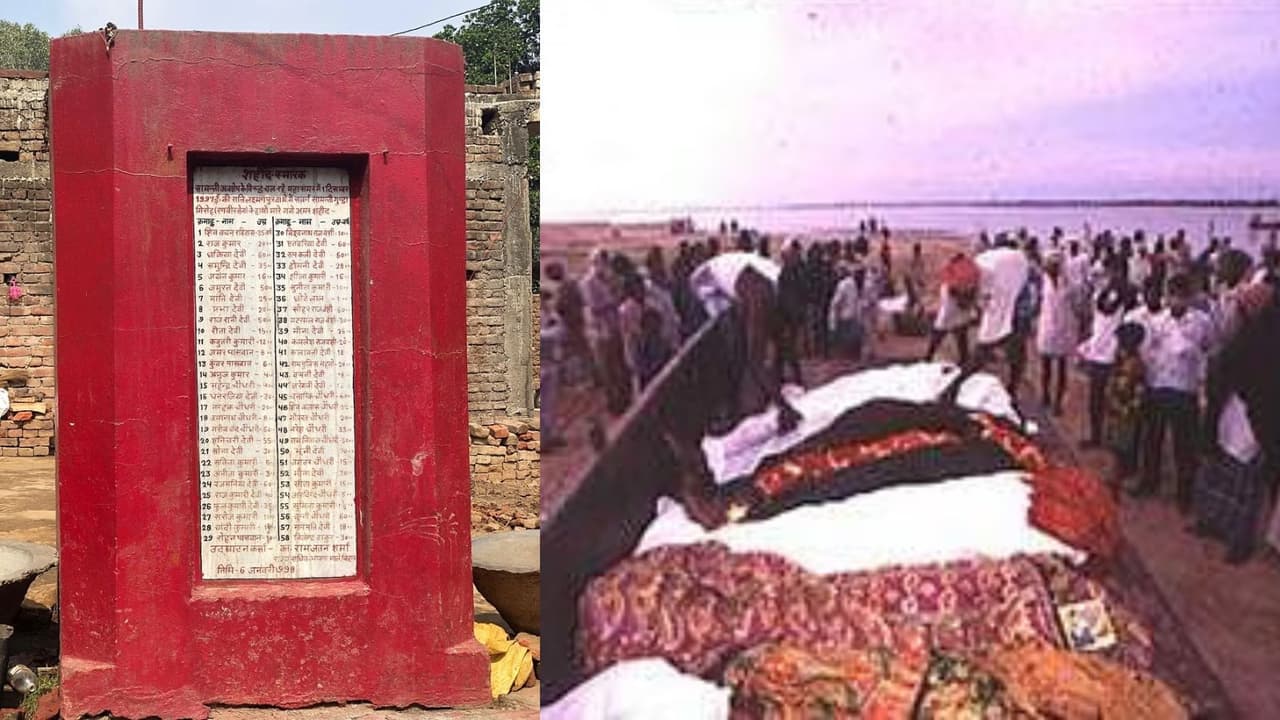On 30 November 1997, Ranveer Sena killed 58 Dalits, including 27 women and 16 children, in Laxmanpur Bathe, Bihar. This caste massacre became a symbol of political and social hatred of Bihar.
On the night of November 30, 1997…while the rest of the world was sleeping, humanity was counting its last breaths in Laxmanpur Bathe, a small village in Jehanabad district of Bihar. What happened that night in this small village on the banks of the Son River shook the entire nation, the murder of 58 innocent people, including 27 women and 16 children. That night was not just a massacre, it was a horrifying symbol of Bihar’s caste politics, social hatred and broken system.
Ranveer Sena’s guns and Dalit village
Laxmanpur Bathe was a Dalit-dominated village situated on the banks of river Ganga. There was always tension with the surrounding upper caste villages. On questions of land, wages and prestige. At that time, there was an open war going on in Bihar between MCC (Maoist Communist Centre) and Ranveer Sena. On one side were the landless laborers and Dalits, who supported the MCC, on the other side was the Ranvir Sena, the armed force of Bhumihar farmers, which spoke the language of “revenge”.
That cold night of 30 November, more than 100 armed members of Ranveer Sena entered Bathe village. They had country made rifles, guns and live ammunition. First they crossed the bridge, surrounded the village, and then the blood game began.
Screams of 16 children and silence of 27 women
The sounds of firing started echoing around 11 pm. People ran, some closed doors, but the bullets did not hit anyone. One by one, 27 women and 16 children were riddled with bullets. Many houses were set on fire. The next day, only smoke, ashes and 58 dead bodies were left in the village. There were no criminals among those who died. Only labourers, farmers, old people and children, whose only mistake was that they were “Dalits” and lived in “MCC areas”.
16 were hanged, then everyone was acquitted
After this incident there was earthquake in Bihar. It was described as the biggest failure of “Jungle Raj” during the reign of then Chief Minister Lalu Prasad Yadav. The state government refused a CBI investigation and the case went on in the Patna Sessions Court. In 2010, the lower court awarded death sentence to 16 convicts and life imprisonment to 10 others. But the story did not end here. In 2013, the Patna High Court acquitted all 26 accused due to lack of evidence. There were no witnesses to the 58 bodies, no evidence was found, and the court said, “There is no evidence.” The survivors of Bathe cried that there is no proof but there are dead bodies, sir.
Even today the hearts of the villagers are shaken by remembering this.
Even today, when someone reaches Laxmanpur Bathe, the silence in the village speaks. Those brick walls, which once had blood stains on them, are now covered in dust. But even today, remembering that scene, a fear strikes in the eyes of the elders. There is no statue, no monument to those killed in this massacre. There is just a broken stone, on which 58 names are written, for whom “Justice” became just a word in the book.
Bathe is alive in Bihar politics
There is talk of Laxmanpur Bathe in every election. Political parties sometimes call it a “conspiracy against Dalits” and sometimes “the memory of Jungle Raj”. But the truth is that the land where 58 people were killed still has the same story of poverty, fear and unemployment. That village is still struggling with lack of electricity and roads, but no one has any hope of “justice” now.
